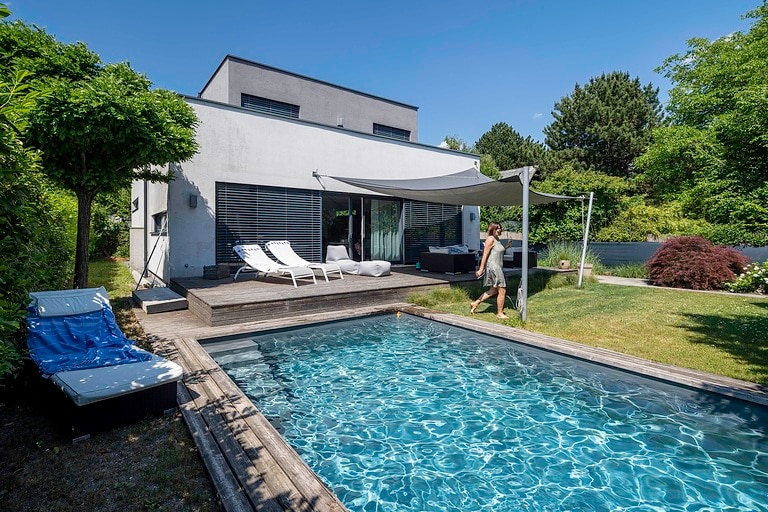02.05.2025
Submersible pump instead of diving: Emptying pools made easy
Summer was fantastic, filled with endless hours by the pool, laughing, splashing, and soaking up the sun – having a pool in your own garden is truly a highlight. But when the leaves start to fall or it’s time for spring cleaning, one pressing question emerges: How do you get all that water out without back pain and a chaotic mess of buckets? The answer is as simple as it is efficient: With a submersible pump.

Why should you drain the pool at all?
Not every pool needs to be completely drained after the season. However, in many cases, it makes sense – for instance, with above-ground pools without a fixed filter system, when there’s heavy contamination, or if the water has been standing for a long period. Also, having an empty pool is crucial before undertaking any deep cleaning or repairs.
And honestly, anyone who’s tried to remove 10,000 litres of water with a ladle will appreciate a good solution.
Which pump is the right one?
For private pools, a submersible pump for wastewater is recommended – such as the Wilo-Drain TMR32. Why?
These models are:
- Ready-to-plug with a float switch for immediate use
- Mobile and lightweight, easy to transport
- Efficient, handling up to 10,900 litres per hour with a residual level down to 2 mm
Ensure the model fits your pool size and the water’s chlorine content. Stainless steel submersible pumps are particularly corrosion-resistant – ideal for frequent use.
Here’s how to: Five steps to an empty pool
1. Secure power: Use a socket (resistant to water contact, e.g., rain) with a residual-current device. Water + electricity = non-negotiable
2. Set up the pump: Place it at the pool’s deepest point.
3. Connect the hose: Ideally, water should be directed into the sewer or a seepage area – please follow local regulations!
Make sure the hose to the water outlet is as short and straight as possible – and not smaller than the pump’s connection diameter. The longer or narrower the hose, the more resistance occurs in the system. This can cause the pump to work slower or lack sufficient power to efficiently pump the water out. A short route to the sewer with a suitable hose ensures everything drains quickly and smoothly.
4. Start the pump: With automatic control, the float switch takes care of the rest. Alternatively, it can be switched manually.
5. Remove remaining water: The remaining two millimetres of water must be wiped away or removed with a wet vacuum.
More possibilities in the garden
Once the pool is empty, the pump doesn’t take a holiday. Did you know that submersible pumps are also ideal for
- emptying rainwater barrels and storage tanks
- cleaning garden ponds (particles in the water must not be larger than 10 mm, otherwise the pump may clog and block)
- the discharge of rainwater after heavy rain
With the right model, the pump becomes an all-around helper for the home and garden – saving a lot of muscle power.
Practical, versatile, indispensable
Those who own a pool know: Water fun comes with some effort. But with the right equipment, many tasks can be made easier and more stress-free. A submersible pump is a true multitasker – not just for emptying pools.
It's best to get advice from a specialist to determine which model suits your garden. And then it’s just: Get the pump in and the water out and it’s done.

